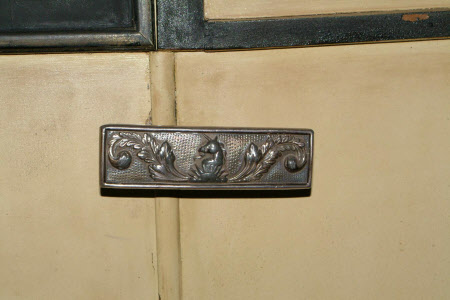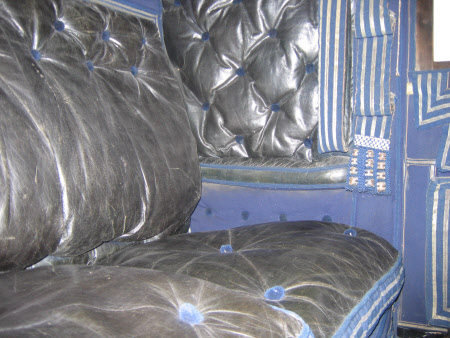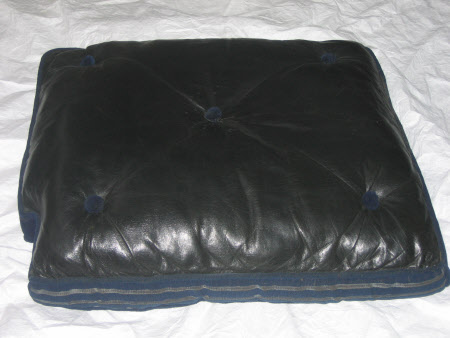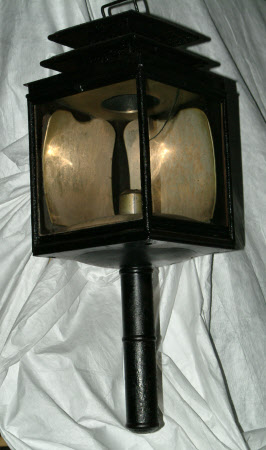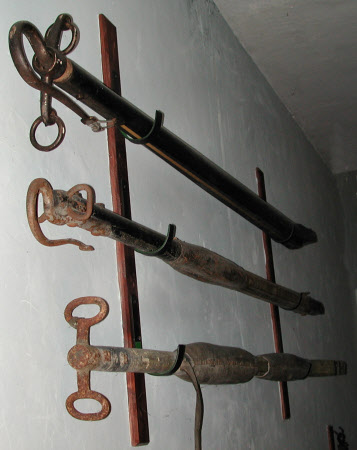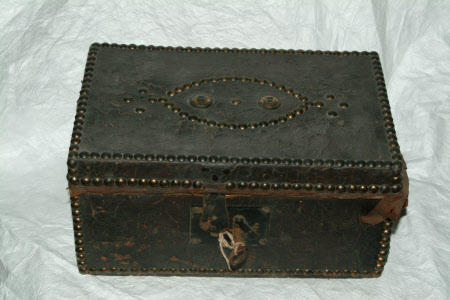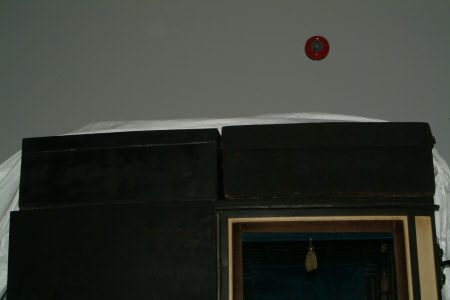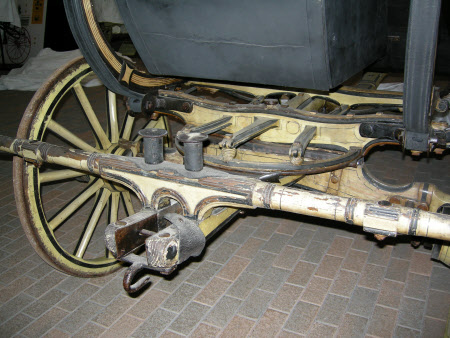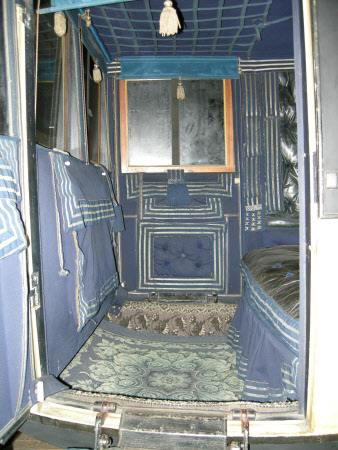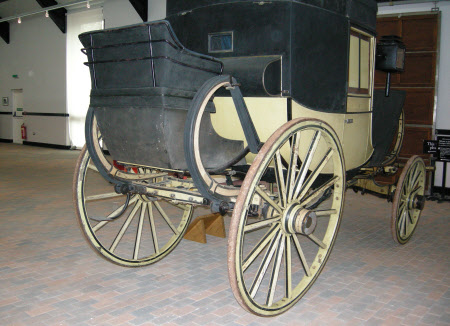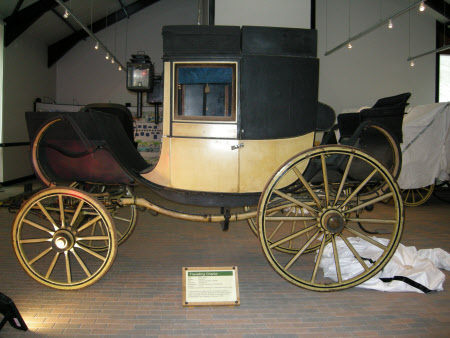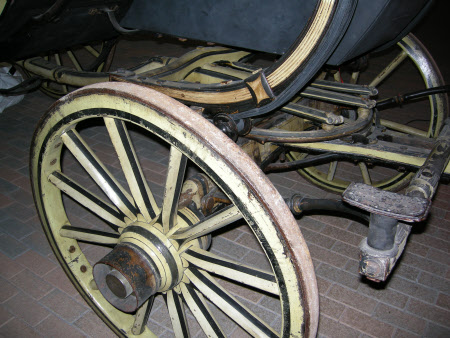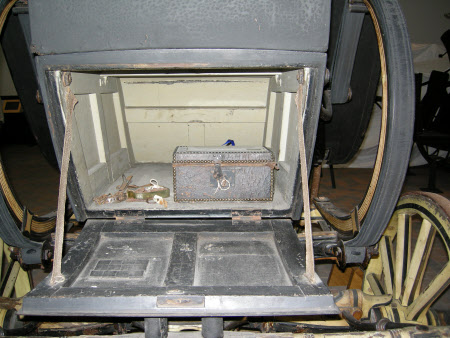Travelling chariot
Clover
Category
Carriages & other vehicles
Date
1815
Materials
Glass, Ivory, Leather, Linoleum, Metal, Textile, Wood
Measurements
2440 x 1930 mm; 3800 mm (Length)19 cwt (Wt)
Order this imageCollection
National Trust Carriage Museum
NT 272895
Caption
For long-distance road journeys, a private carriage was a luxury. Horse-drawn vehicles had provided transport for thousands of years but in the 18th and 19th centuries technological advances and new designs offered greater comfort, speed and privacy for travel on roads that were often rough. Travelling chariots such as this one were well equipped, with cushioned seats, silk roller blinds and carpets. They were pulled by pairs of post-horses, hired at inns along the route. Chariots enabled leisure travel, such as the European grand tours embarked upon by rich young men, and played a part in international diplomacy. Diplomat Gibbs Crawfurd Antrobus (1793–1861) is believed to have used this chariot. He was Secretary of Legation in Sardinia-Piedmont and to the Two Sicilies in the 1820s, and travelled widely in Europe. This carriage has its original roof-mounted imperials (leather and wood luggage cases) and even a compartment for his dress uniform sword. It has two seats inside; servants rode outside on the rear rumble seat. This is one of the oldest carriages in the National Trust Carriage Museum’s collection.
Summary
Travelling Chariot built for Colonel Antrobus by Clover circa 1815.
Full description
Travelling chariot on ‘C’ springs and compassed perch with platform boot and boot imperial in front. Hind footboard and hind boot incorporating rumble seat behind. Sword case to back of body. Two roof imperials. In yellow and black livery, with black leather and dark and light blue interior trim. Heraldry crest on two sides - 'Dei Memor Gratus Amicus' Mindful of God, Grateful to Friends. This carriage dates from the early 1800's and was donated by Colonel Antrobus. It is believed that his ancestor Gibbs Crawford Antrobus used this travelling chariot in his career as a diplomat which took him through Europe at a time of political change. As a junior secretary under Lord Castlereagh he attended the Congress of Vienna (1814-15) that marked the end of the Napoleonic War. In 1824 he was created Envoy Extraordinary and Minister Plenipotentiary for George IV to the Kingdom of the Two Sicilies, which was governed from Naples. His official accreditation, signed by the King, with the royal seal attached, was his letter of authority. A silver case mounted with the royal arms protects the seal. As part of his official uniform he wore a dress sword, and there is a sword case at the back of the body in which it would have been carried. The carriage has its original imperials (light wooden cases covered in leather) carried on the roof and, in this case, also on the front boot. On long journeys it would be pulled by pairs or teams of post horses hired at inns along the way, ridden by post boys who would then hack the horses back from the next post. The horses were changed every 10-12 miles. It could seat two passengers inside and two servants in the rumble seat on the hind boot. It would be postillion-driven for travelling and, by fitting a coachman’s seat; it could be converted for town use, when a coachman would have driven it. CJN 12.11.07 BODY Hind footboard mounted on extended body loops and stays to the back of the body with hind boot incorporating rumble seat bolted to it so that it can be removed. Treble seat rails. Bottom hinged door to front of platform boot. Boot imperial can be removed revealing cap nuts to secure coachman’s seat for town driving. Doors Doors on two concealed hinges with silver plated T handles with Antrobus crest and acanthus scroll. Budget locks to enable doors to be locked from outside. Brass bolts to enable doors to be bolted from inside. Steps Double folding steps at each door. Jags worked on outer stock hoops of front wheels, rectangular jagged plate treads on outer roller bolts. Two rectangular jagged plate steps mounted at nearside end of hind spring bed for access to rumble seat. Windows Lowering windows in doors and two lowering windows in front of body. Window frames covered in brown velvet. Panel blind at each window Lamps Square lamps with two tier square chimneys. The lamp can be lifted out of the body and turned through 180 degrees to prevent the glasses from being damaged when not in use. External Furniture CARRIAGE Wheels 12 and 14 spoke English pattern wheels with no spoke stagger with flat iron tyres Axles Collinge’s patent axles , front compassed up and clipped to axle bed, hind axle compassed down, clipped to axle bed and bolted to perch. Springs C springs front and back Fore carriage Close futchell fore carriage with straight transom and axle bed, compassed horn bar – axle bed has curved extensions to prevent access of grit. Transom and horn bar have carved circular pattern fiddle ends. Turned splinter bar. POLE Perch Plated wood perch with wings attached by shrunk bands, bolted beneath hind axle bed and morticed through hind spring bed. Hind carriage Hind spring bed has fiddle ends to match fore carriage, hind axle bed has curved extensions to match ditto Brake No brake. There are two hooks on the perch which were probably fitted for a drag shoe and a wheel hook, but they are both missing. There is an eye bolt on the perch for a drag staff, which is also missing. Paint Roof, upper panels, underside of floor, body frame, 1 roof imperial and boots – black. Lower body panels, wheels and carriage - pale yellow. Single broad line on wheels. Broad line on edges of spring plates. Carriage lined broad and fine – black. Panel blind frames – varnished mahogany. Heraldry Antrobus crest on fence rail panel of both doors – a unicorn’s head couped arg. Horned and maned or gorged with a wreath of laurel vert, issuing out of rays of the sun ppr. Garter above crest with motto: Dei memor, gratus amicis Leather Leather main braces, collar braces beneath the body. Collar braces beneath hind footboard missing. Check brace rings on back pillars but check braces missing. Leather squab on leather served seat rails to rumble seat. Welted seat valance. Staples for apron but apron missing. One roof imperial and boot imperial leather covered. Leather covered dashboard. Roller bolt leathers. Cap leathers missing from inner roller bolts. External Trimming Rumble seat back and side squabs blue faced wool cloth. Hind boot well lined with floor cloth with white flowers on a faded black ground Internal Trimming Two seat cushions, seat back and quarter squabs are buttoned black morocco using blue wool tufts. Roof lining, upper back squab, front panel and door linings blue faced wool cloth. Broad laces with blue worsted stripes on pale blue silk ground (now bleached to gold). Minor laces to match. Tassels on hand holders incorporate three strings of turned wood hangers covered with royal blue floss silk. Hangers are missing from tassels on the three glass strings that are fitted in place. Two strings of hangers on glass string which has been removed from nearside front window – royal blue, not faded. Looped pile carpet on inside of rockers faded brown and cream foliage design. Looped pile carpet on floor. Cream and aquamarine on faded blue ground in floral pattern with central rosette with foliate border. Looped pile runner of varying width on step treads. Step risers black morocco with blue wool cloth lining. Treble loop hand holders and swing holders each side. Blue taffeta spring curtains with pale blue silk tassels (now faded to gold). Blue webbing net attached to front part of roof.
Makers and roles
Clover, coach builder

